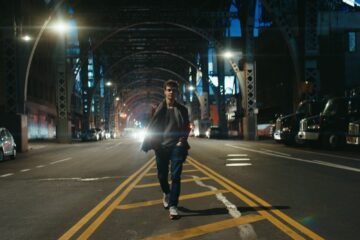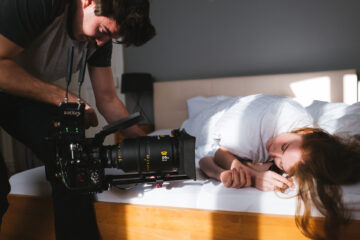In filmmaking, technology often drives creativity. One such innovation is the anamorphic lens, which revolutionized cinema by enabling wide-angle shots without requiring larger film formats. While these lenses introduced optical imperfections that filmmakers initially had to accept, they later became celebrated for their distinctive visual character. The history of anamorphic lenses spans from military origins to Hollywood’s golden era and beyond.
The Origins of Anamorphic Lenses: Military Innovation
Anamorphic lenses began not in Hollywood but in the military, where advanced optics were critical. In the early 20th century, French astronomer Henri Chrétien developed the first anamorphic lenses for World War I. His design gave soldiers a wider field of view without requiring larger optics. The lens squeezed the horizontal field of view.
Anamorphic lens systems were used in periscopes, tanks, and other military devices that required an extended horizontal field of view. This technology allowed soldiers to see a wider panorama while keeping equipment compact and manageable. However, Chrétien’s invention soon found a new stage — cinema.
Anamorphic Lenses in Filmmaking: Enter CinemaScope
Hollywood adopted anamorphic lenses in the 1950s to counter the rise of television. In 1952, 20th Century Fox sought ways to make films more immersive. They discovered Chrétien’s Hypergonar system, which could shoot widescreen films without sacrificing image resolution by masking or cropping the top and bottom of the 35mm frame – a common method that reduced the usable image area and overall detail.
20th Century Fox acquired the rights to use Chrétien’s invention and developed CinemaScope, enabling filmmakers to achieve much wider aspect ratios using standard 35mm film. The lenses compressed images horizontally during filming, which were later expanded back to widescreen in projection.
CinemaScope and the Rise of Widescreen Movies
The first CinemaScope film was The Robe (1953), a biblical epic showcasing grand, immersive visuals. Its success launched a widescreen revolution in Hollywood.
CinemaScope became a creative tool. Directors used the wider aspect ratio to emphasise environment and movement within landscapes. Anamorphic lenses thus contributed to some of cinema’s most iconic visuals.
How Anamorphic Lenses Work
Standard lenses capture images in the same aspect ratio as the film stock or sensor. For wide-angle shots, filmmakers once needed larger film stocks or had to crop, sacrificing quality.
Anamorphic lenses solve this by optically squeezing the horizontal axis onto standard 35mm film, producing a distorted image that is later “desqueezed” during projection into its proper aspect ratio. This allowed filmmakers to achieve widescreen shots without extra costs or quality loss.
Initially valued for practical benefits, anamorphic lenses also introduced visual quirks such as streaking lens flares, oval bokeh, and edge distortion. Once viewed as flaws, these characteristics are now celebrated for their aesthetic appeal, adding depth, scale, and artistic personality to films.
Anamorphic Lenses in Modern Filmmaking
Though their use declined with digital filmmaking, anamorphic lenses never disappeared. They have seen a resurgence as filmmakers embrace their unique look.
Directors and cinemathographers use anamorphic lenses for their distinctive flares, bokeh, and subtle distortions, which reintroduce character into otherwise clinically sharp digital images.
Modern cinematographers also use anamorphic lenses to embed a specific optical look into footage, preserving their artistic vision through post-production workflows.
Conclusion: A Lasting Impact on Cinema
Anamorphic lenses exemplify how technological innovation transforms art. From World War I battlefields to shaping the widescreen format, their impact on filmmaking is enduring. Henri Chrétien’s invention revolutionised visual storytelling and continues to inspire directors and cinematographers seeking an epic, immersive look. As technology evolves, anamorphic lenses remain a bridge between optical craftsmanship and contemporary film production.
Image source: “Dear Brain”, DoP: Johanna Kausch; Light and Grading: Demian Pleuler





